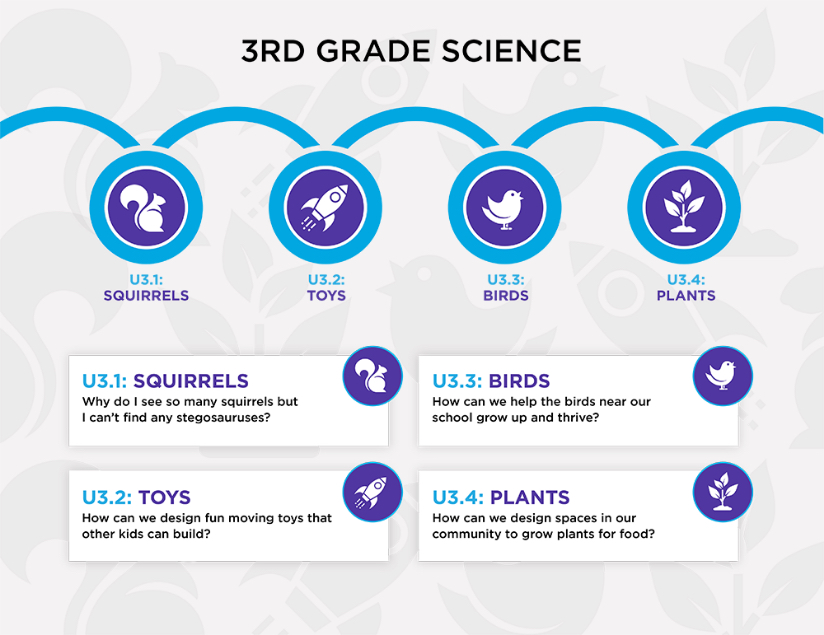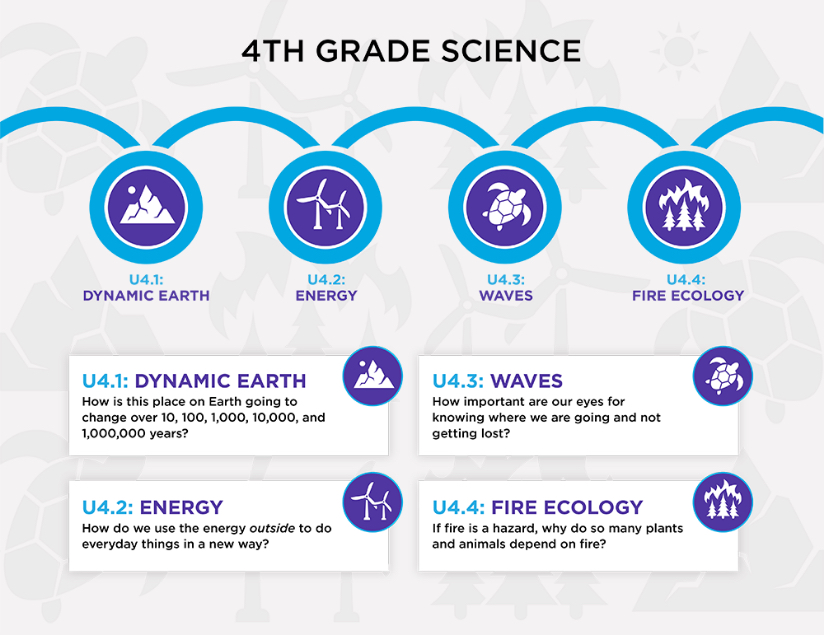Multiple Literacies in Project-Based Learning
Overview
Funded in 2015-2020, the goal of this partnership was to build Project-Based Learning courses for third and fourth grades that require sense-making through applying science ideas and practices, language literacy, mathematical thinking, and technology tools. Led by Dr. Joseph Krajcik and Dr. Barbara Schneider from Michigan State University, Dr. Annemarie Palincsar from the University of Michigan, and Dr. Emily Adah Miller from the University of Georgia, this team designed, developed, and tested their approach to interdisciplinary PBL curricula and its related professional learning. Additional funding was granted in 2017, to develop and test a fifth grade course using the same project-based approach as the third and fourth grade courses.
Principal Investigator:
Led by Dr. Joseph Krajcik from Michigan State UniversityDr. Annemarie Palincsar from the University of Michigan, and Dr. Emily Adah Miller from the University of Georgia
Year of Funding:
2015-2023
Curriculum
Multiple Literacies in Project-Based Learning: Third Grade Course
The third-grade course contains four interdisciplinary projects that address Next Generation Science Standards and Common Core State Standards in English Language Arts and Mathematics. A major theme that runs through the projects is a focus on structure and function in systems.
In the first project, students explore the question: “Why do I see so many squirrels but I can’t find any stegosauruses?” They create a model based on fossil evidence to explain that as the environment changed 150 million years ago, some animals (mammals) were able to adapt and others (the stegosaurus) died out. Then students expand the model in short story format.
“How can I make fun moving toys that any kid can build?” is the driving question for the second project. Students use the engineering design process to design and improve upon a toy that moves using what they figured out about forces and how forces cause an object to move, stop, slow down or change directions. They share their design process with students in earlier grades so that those students could make the toy.
In the third project, students develop solutions to answer the question: “How can I help the birds around my school grow up and thrive?” students design bird feeders that take into account the physical and behavioral traits of the bird they are concerned with, the changing weather, the features of the environment, and reproductory needs of the focal bird.
In the fourth project, students plan and maintain a small community garden at the school to figure out: “How can I grow food for my community?”. Students create a multimedia presentation in which they include pictures, descriptions of the traits of their plants as they grew, a model of their plant’s life cycle, and written instructions for planting and caring for their plant that they present to others.
Download the 3rd grade science poster and print it for your class.
 Download this file (359 KB)
Download this file (359 KB) 
Download the 3rd grade science poster and print it for your class.
 Download this file (359 KB)
Download this file (359 KB) Multiple Literacies in Project-Based Learning: Fourth Grade Course
The fourth-grade course contains four interdisciplinary projects that address Next Generation Science Standards and Common Core State Standards in English Language Arts and Mathematics. A major theme that runs through the projects is a focus on energy and energy transfer.
In the first project, students investigate the driving question: “What causes our land to be shaped the way it is?” They construct design solutions for slowing down the effects of moving water, test the effectiveness of their design solution by building a prototype/model, and make observations to serve as evidence for the effectiveness of a design plan.
The second project addresses the question: “Where does the energy to light my home come from?” Students design a prototype to explore natural resources to transfer energy to a simulated community. They carry out a design solution and gather evidence to make a claim regarding the effectiveness of their design plan. The final artifacts include students communicating the evidence obtained from their design solution to their classmates.
In the third project, students explore: “How can we design and use technologies to improve communication that helps others?” They use ideas about communication to design a tool using light, sound, chemicals, and/or electric current that can help others to communicate more effectively. Student artifacts will answer questions such as: “How can I communicate with someone I can’t see? How can I communicate with many people at once? How can we communicate in the dark? How can I communicate with someone in another room?”
“If fire is a hazard, why do so many animals and plants depend on it?” is the driving question for the fourth project. Throughout the project , students use their understanding of energy, fuels and ecology to develop an engineered solution for a habitat to protect an animal or plant. Given criteria and constraints, they explain why their solution is the optimal solution.
Download the 4th grade science poster and print it for your class.
 Download this file (161 KB)
Download this file (161 KB) 
Download the 4th grade science poster and print it for your class.
 Download this file (161 KB)
Download this file (161 KB) Multiple Literacies in Project-Based Learning: Fifth Grade Course
The fifth-grade course contains four interdisciplinary projects that address Next Generation Science Standards and Common Core State Standards in English Language Arts and Mathematics.
In the first project, students explore the question: “Why do some animals need the land unchanged, and some animals change the land?” They create a food web and terrain map based on evidence they gathered about decomposition, food chains, energy transfer, migration, and extinction. Then students expand their map into a three-dimensional model and consider the potential human impact on their ecosystem.
“How do I create a new taste?” is the driving question for the second project. Students create a scientific model to describe patterns in taste that they notice in foods. Through the lens of stability, change, and scale, the students adapt their models to consider what happens when two tastes are mixed together or when sugar is added. Students culminate the project by creating their own taste and a corresponding marketing plan.
In the third project, students develop solutions to answer the question: “How could you travel 1,000 miles in the same direction, without a compass, map, or phone?” Students solve the mystery location by considering the positions of the sun and earth and the relationship between the direction and the length of shadows and the angle of the light source. Students use data and mathematical thinking and modeling to communicate their discovery of the mystery location and how to then travel north 1,000 miles.
In the fourth project, students develop and test a model of a solution that will prevent nearby freshwater from running out, or becoming unhealthy to humans and animals in order to figure out: “How can I help my community to always have clean and healthy fresh water?” To develop and build their models, students visit a local water source, consider scenarios for water scarcity, learn about bioaccumulation in food chains, and analyze data to understand runoff pollution.


